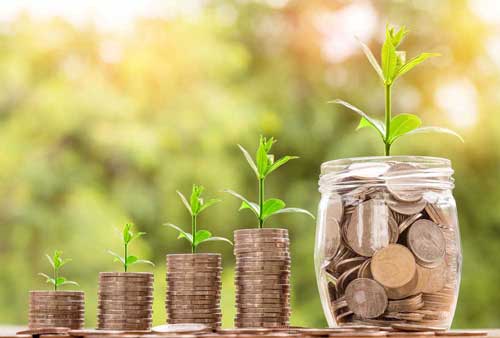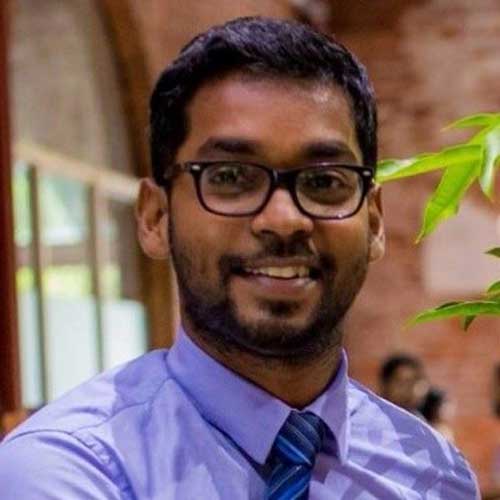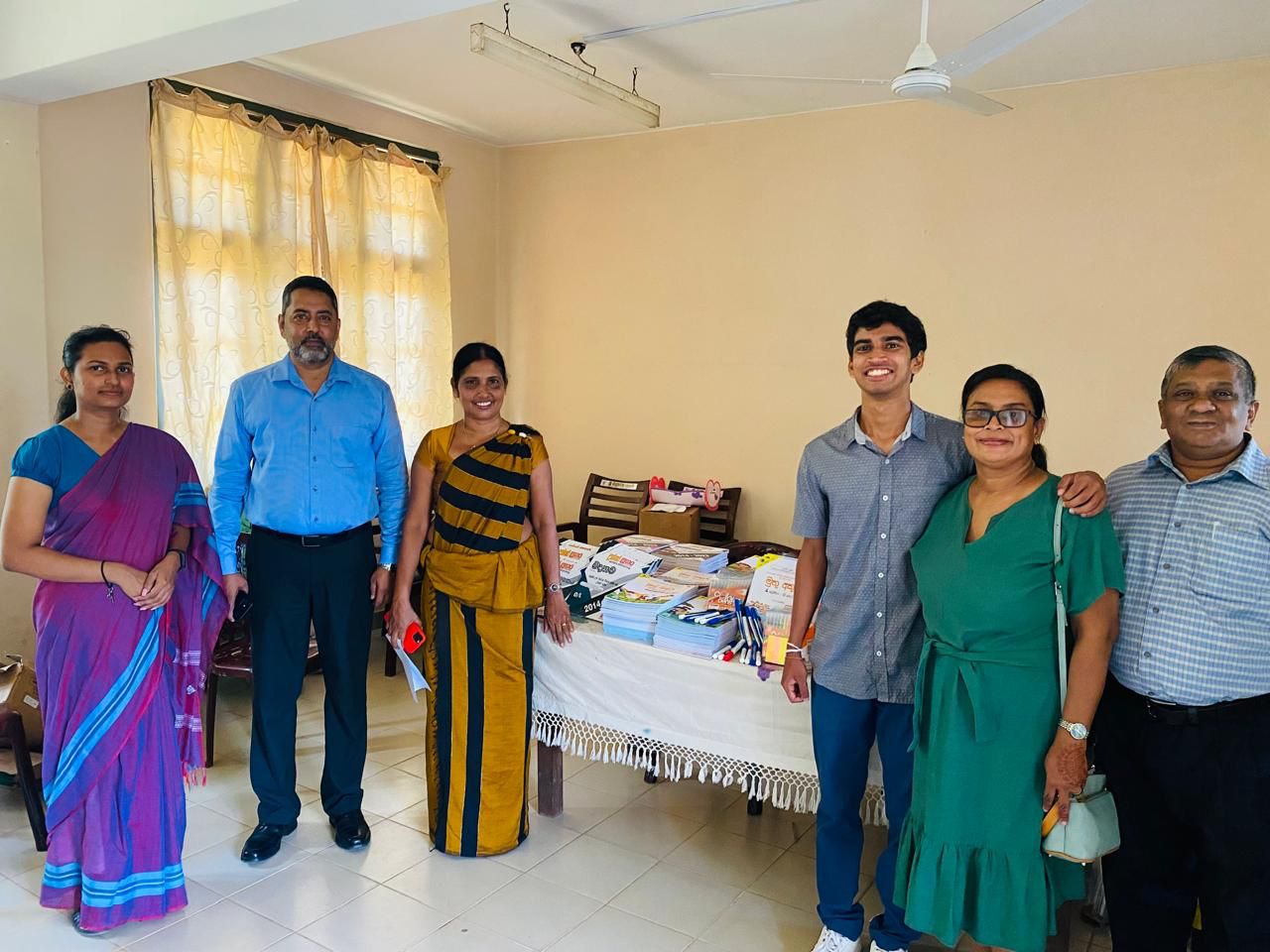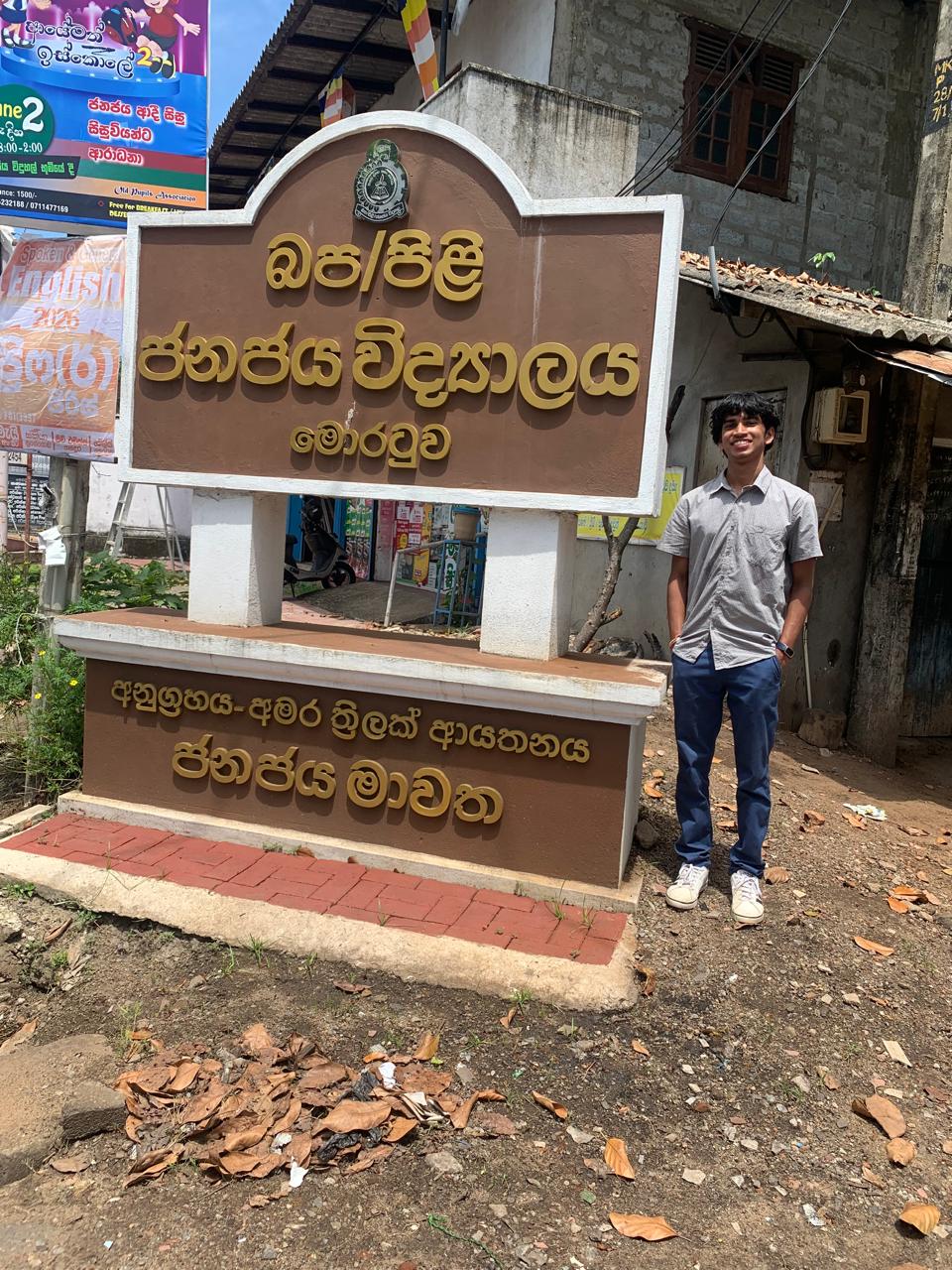Co-creating Innovative Sustainable Finance Solutions with Private and Non-Profit Sectors
 The Government of Sri Lanka has outlined its expectations to conclude its sovereign debt restructuring expeditiously to regain debt sustainability and access to international finance. With the implementation of domestic debt optimization underway, GoSL is hoping to restructure USD30.8bn of its external debt latest by October/November 2023. GoSL had earlier in the year declared its intent to leverage sustainable finance with the support of institutions such as the Global Green Growth Institute (GGGI), UNESCAP and UNDP. One of the sustainable finance instruments that is considered for the sovereign debt restructure is the debt for nature swap.
The Government of Sri Lanka has outlined its expectations to conclude its sovereign debt restructuring expeditiously to regain debt sustainability and access to international finance. With the implementation of domestic debt optimization underway, GoSL is hoping to restructure USD30.8bn of its external debt latest by October/November 2023. GoSL had earlier in the year declared its intent to leverage sustainable finance with the support of institutions such as the Global Green Growth Institute (GGGI), UNESCAP and UNDP. One of the sustainable finance instruments that is considered for the sovereign debt restructure is the debt for nature swap.
Countries such as Seychelles and Barbados had successfully structured such debt for nature swaps, although the amount of debt that was treated through such swaps remained relatively small with the transaction amounts being under USD160mn. However, with Belize (USD 553mn) and more recently with Ecuador (USD1.6bn), the potential of debt for nature swaps to treat a larger quantum of debt has been evidenced. In the case of Ecuador, the country saved over USD1bn in future interest and principal payments through the debt swap with the commitment that it would allocate more than $323 million over 18.5 years for conservation of the Galápagos region.
The benefit of such sustainable finance instruments extends beyond the initial savings from the transaction, as the designing and structuring of such swaps, if done right, could help to transform the sustainable finance landscape of the debtor countries with enhanced collaboration and capacity building of domestic institutions and stakeholders (Government Agencies, Academia/Scientific Community, Private Sector, Financial Sector and Community Organizations) through enhanced cooperation with international partners. The changes in policy and market mechanisms enabled through these initial foray in to innovative sustainable finance instruments could help to unlock additional streams of sustainable finance flows for debtor countries with greater cooperation between public and private finance actors as advocated by the UN Secretary General in the Call to Action for a SDG Stimulus.
Stakeholder engagement, transparency, and accountability when designing and implementing these sustainable finance instruments is key to ensure that these instruments deliver the optimum outcomes for the debtor country. In the case of Ecuador, even though the country benefitted from the debt conversion, it also incurred transaction costs -- estimated to be 1.33% spread between loan given to Ecuador by an international consortium [GPS Blue Financing DAC] and the blue bond that this consortium raised for the loan to the country, according to a study by the researcher Ortega-Pacheco. The effectiveness of these instruments in furtherance of the interests of the debtor country, therefore, depends to a larger degree on how these instruments are structured.
How much of Sri Lanka’s USD30.8bn in external debt due for restructuring could be treated with debt swap(s) or other sustainable finance instruments? What are some innovations that Sri Lanka could pioneer to ensure that benefits of such sustainable finance instruments for Sri Lanka far outweigh the costs (transaction costs, opportunity costs as a result of any delay in reaching final agreement on debt restructure)? Below are some aspects that could be considered:
Leveraging Debt Swap to Create a Country-Level Blended Finance Facility
In 2020, the Sri Lanka Banks’ Association’s Sustainable Banking Initiative (SLBA SBI) mooted the concept of creating a country-level blended finance facility and engaged with actors such as EU in Sri Lanka, WBG/IFC, OECD and JKH to assess the feasibility of forming such a Special Purpose Vehicle (SPV). The idea was to pool development finance and philanthropic funds and blend with debt and equity from both domestic and international investors to channel financing towards sustainability propositions as viability gap funding initially targeted towards sustainable agriculture. Engagements were held between SLBA SBI and Sri Lanka Agripreneurs’ Forum to identify viability gaps in financing sustainable agriculture. The initiative did not proceed beyond the concept stage as it failed to achieve critical mass of actors in support to structure such an SPV.
However, with the GoSL considering a debt swap arrangement, it could lead the engagements with support of EU, IFC, UNDP and GGGI to create a country-level blended finance facility that could promote blended finance for sustainable agriculture and fisheries, sustainable tourism, sustainable energy, etc., with the involvement of the private sector, non-profit sector, academia and financial sector.
In the case of Ecuador, to administer part of conservation funds generated from the Debt for Nature Swap towards the conservation of the expanded Galápagos Marine Reserve, a nonprofit corporation in the form of Galápagos Life Fund (GLF) has been formed, which would assess and finance marine conservation projects proposed by Ecuadorian organizations including those that promote sustainable fisheries and sustainable tourism. The governing board of this fund included five representatives from relevant government ministries and another six representatives from private sector, NGOs and the academia. However, there is criticism on the level of country ownership in governance of the Fund as the private sector/NGO representatives of the fund are primarily foreign parties supporting the debt swap rather than from local associations who could represent the civil society in Ecuador.
If Sri Lanka is to set-up an SPV for administering the savings from a potential debt swap, then it would be prudent for this process to be led with country ownership and for it to be set-up as a Country Level Blended Finance Facility. GoSL with the support of UNDP is already advancing on the Marine Spatial Plan for Sri Lanka. Sri Lanka had also identified plans for restoration of vital ecosystems through the REDD+ program and ESCAMP project. Whilst the GoSL could commit to enhancing and enlarging the protected areas through a debt for nature swap, as is traditionally done in debt for nature swaps, it could also leverage this debt swap to encourage the involvement of broader set of stakeholders for conservation initiatives outside of the protected areas. Environmental organizations such as the WNPS and think tanks such as SLYCAN Trust that promote sustainable enterprise in the agri-food and tourism sectors could be engaged along with Ceylon Chamber of Commerce and Sri Lanka Banks’ Association to support and finance sustainable enterprises that for example, contribute meaningfully towards the national action plan for the mitigation of the Human-Elephant Conflict.
Local banks could also play a pivotal role in supporting the set-up and functioning of a country-level blended finance facility with expertise in fund management and pipeline development. For example, DFCC bank having recently obtained the Direct Access Entity status of the Green Climate Fund, could support in managing and blending the funds from GCF and conservation funding from debt swap(s) towards financing climate adaptation projects. In relation to pipeline development, entities such as the SDB bank that has been piloting agroforestry in partnership with cooperatives as a nature based solution and engaged in value chain development could play a role in developing private-sector, community owned programs with the support of entities such as the USAID Climate Adaptation Project to involve cooperatives and MSMEs in sustainability initiatives.
A country-level blended finance facility, with investment commitments and network support by a range of organizations, could address the clarion call for a larger development bank or a green bank in Sri Lanka. Rather than confining development financing to one or two institutions, a participatory mechanism with robust governance, transparency and independent redress mechanism could serve the interest of the country. The recent establishment of the National Credit Guarantee Institution (NCGI) demonstrates that there is appetite within the development finance sector to collaborate in addressing the national needs.
Designing the Expenditure Program of a Debt Swap: Inclusive and Locally Relevant
 In a debt swap, the quantum of debt treatment is dependent on aligning the interests of creditors and debtor country as well as the perceived credibility of framework or process in implementing swap commitments/agreed KPIs. An expenditure program in a swap details which initiatives or projects could be financed from funds released through the swap. Often times in order to reduce complexity (both in structuring and implementation) and bring the debt restructuring to a conclusion expeditiously, the expenditure programs are designed around few priorities with solid pipeline of projects. Many of the recent debt swaps have been structured as either debt for nature swaps or debt for climate swaps (linked to NDCs), given the global emphasis on climate and nature ambition.
In a debt swap, the quantum of debt treatment is dependent on aligning the interests of creditors and debtor country as well as the perceived credibility of framework or process in implementing swap commitments/agreed KPIs. An expenditure program in a swap details which initiatives or projects could be financed from funds released through the swap. Often times in order to reduce complexity (both in structuring and implementation) and bring the debt restructuring to a conclusion expeditiously, the expenditure programs are designed around few priorities with solid pipeline of projects. Many of the recent debt swaps have been structured as either debt for nature swaps or debt for climate swaps (linked to NDCs), given the global emphasis on climate and nature ambition.
However, other swap types such as debt for development swaps and debt for education swaps have been experimented in certain other countries in the past (eg: Debt for Education Swap in Cameroon with support from France – Euro 1.17bn in 2006). Following on from the success of the recent Debt for Nature Swap, officials in Ecuador are currently working towards a “Debt for Social Swap” targeting the financing needs in education and child nutrition. Ecuador had previously issued the first Sovereign Social Bond with the support of Inter-American Development Bank in 2020.
The focus of the swaps depends on parties that get involved to facilitate or structure the swap. In the case of Seychelles, Barbados and Belize, a key role was played by The Nature Conservancy (TNC), who acted as a third party in facilitating the swaps. In Barbados, for example, TNC as a facilitator through its Blue Bonds for Ocean Conservation Program, played a key role in the design of the swap in bringing the focus to marine conservation.
The focus of debt swap also depends on the demand from investors. As a result of concerted global efforts, there is increased demand for green and blue bonds among international investors. In the case of debt swaps facilitated by TNC and Credit Suisse such as the swaps financed through Blue Bonds for Seychelles and Barbados, a key investor that had bought into the bond issuances was Nuveen LLC, which has a focus on responsible investment – specifically on environmental conservation. Many of Sri Lanka’s current large scale International Sovereign Bondholders such as BlackRock, Amundi, Fidelity, Ashmore, T. Rowe Price have a focus on channeling capital towards investments that have a positive climate, nature and human development contribution. Engaging with these investors proactively to demonstrate the potential to structure sustainability bonds that also align with their commitments could go a long way in increasing the quantum of sustainable finance in a debt conversion.
With the economic stabilization plan being implemented successfully, Sri Lanka will need to make the transformations in its trade and investment regimes to induce growth in its economy. Sri Lanka could make use of the debt swaps to enable those necessary transformations.
Whilst the climate and nature aspects of a debt swap could help to improve sustainability performance of Sri Lanka’s export led industries and agriculture (eg: deforestation free supply chains), the debt swap could also be focused on Sri Lanka’s digital transformation – specifically with commitment by the GoSL to build local talent in ICT. Leading international companies such as LSEG and Virtusa could support the GoSL together with international foundations such as Michael and Susan Dell Foundation to bring in the necessary KPIs and implementation support for ICT education, similar to how TNC supports governments to integrate the conservation priorities in debt swap arrangements. The build-up of talent in digital technologies will help to enhance Sri Lanka’s economic competitiveness and thereby, its repayment capacity on its external debt. It will also be beneficial to companies such as LSEG and Virtusa that service the developed markets with the increased talent pool. The bondholders and supporting partners could identify their contributions in a debt for education swap with their sustainability commitments (SDG 4 on quality education).
A well-coordinated approach amongst the GoSL, private sector, financial sector, NGOs and academia could unlock the possibility for Sri Lanka to frame its debt swap as a “debt for sustainability swap” with KPIs on climate, nature, education and health, which could attract a larger quantum of sustainable finance. Wide stakeholder engagement in the final design of the expenditure program and independent redress mechanisms when operationalizing the program could help to ensure that the outcomes from debt swap is inclusive and locally relevant and is not compromised by political or commercial expediency.
Back to Back Arrangement with Sovereign Debt Swap and Domestic Impact Bond
 Another sustainable finance innovation that can complement the forming of a country level blended finance facility is the involvement of private and non-profit sectors through issuance of development impact bonds or “Pay for Success” instruments.
Another sustainable finance innovation that can complement the forming of a country level blended finance facility is the involvement of private and non-profit sectors through issuance of development impact bonds or “Pay for Success” instruments.
Such “Pay for Success” instruments can help the government to demonstrate to international creditors/third parties that it has effective framework to mobilize resources at scale whilst still being able to report on impact more diligently by transferring some of the implementation, monitoring and reporting burden to local consortia of reputed organizations.
For example, as part of the negotiations with the international creditors, the Government could agree to meeting certain sustainability commitments/KPIs in return for concessions made by international creditors on Sri Lanka’s debt repayment (eg: issuing a new Sustainability Linked Bond to buy back debt). GoSL may be constrained in its capacity to implement and report on sustainability performance due to challenges in public finance and lack of resources. Although Sri Lanka might be able to show that there is potential for positive outcomes in various sectors like environment, education and health, the international creditors might limit their debt concessions, if they are not confident about the Government’s means of implementation. A workaround in this scenario is to set-up a development impact bond framework with the sustainability KPIs and sustainability performance targets clearly identified and invite the private and non-profit sectors to participate in GoSL’s development impact bond as investors and service providers. The non-government actors then would implement the sustainability initiatives on government’s behalf and would be compensated according to pre-agreed terms based on degree of achievement of the sustainability performance targets.
So to illustrate with an example, GoSL could issue a Sustainability Linked Bond to buy back its current ISBs, where the Government agrees to increase its forest cover by 10% by 2030 compared to forest reference levels in 2017. Forest Department of Sri Lanka could help to fulfill part of this target (say 5%), whilst the private sector and non-profit sector consortia (for example, consortia of organizations such as MAS, Dilmah, Nations Trust Bank, Biodiversity Sri Lanka, WNPS, Wildlife Conservation Society – Galle, Thuru, Rainforest Protectors of Sri Lanka) might be invited to participate in Development Impact Bond, where they could implement forest restoration initiatives to achieve the remaining 5% of the target. The private consortia will invest upfront and implement the forest initiative.
These consortia will then demonstrate to an independent evaluator (for example, UNDP or IUCN) with relevant data that they have fulfilled the forest cover targets. The GoSL could in turn use this verified data by UNDP/IUCN in its disclosures to international creditors for fulfillment of the national targets, and pass on part of the savings from interest reductions from international creditors to pay the local consortia for implementing the forest restoration initiative. In order to attract private investment for such Domestic Impact Bonds, the GoSL could have the bond issuance guaranteed by World Bank with appropriate financial and non-financial incentives. The proposition could be further strengthened with instruments such as carbon credits or biodiversity credits.
Conclusion
Whilst a slew of sustainable finance instruments and innovations are available for the GoSL to leverage in its external debt restructuring efforts, the effectiveness of these instruments and innovations will depend to a large degree on the process followed in designing, structuring and implementing the instruments. Involving the local civil society including private sector, non-profit sector and academia could help the government to share some of the burden in implementation, monitoring and review of sustainability initiatives and demonstrate to international creditors that it has means of implementation for higher share of impact financing being provided as debt concessions.
GoSL will need to take great care in ensuring that there is integrity and adequate stakeholder engagement, transparency, and accountability when designing and implementing these instruments while balancing the need to expeditiously conclude the debt restructuring keeping in mind the opportunity costs due to delays in the process and the need to manage disclosures in relation to sensitivity of market information.
Entities such as the Sustainable Development Council, CBSL, Ministry of Finance, Ministry of Environment, UNESCAP, GGGI and UNDP are already engaging with the private sector, non-profit organizations and the financial sector to enhance domestic capacity and involve local stakeholders. There is a need for a proactive engagement by the civil society in supporting these collaborative efforts to develop locally relevant pipeline of projects at scale to tap in to a higher quantum of international sustainable finance.
About the author:
 Adheesha Perera is a sustainable finance specialist currently serving as a Core Group Member of Sri Lanka Banks’ Association’s Sustainable Banking Initiative and as Committee Member of Climate Action Steering Committee and Sub-group on ESG Financing of the Ceylon Chamber of Commerce. Adheesha also serves as a member of Stakeholder Committee on Sustainable Finance set-up by Central Bank of Sri Lanka and serves as a Youth Representative in the Sectoral Oversight Committee on Energy and Transport of the Parliament of Sri Lanka.
Adheesha Perera is a sustainable finance specialist currently serving as a Core Group Member of Sri Lanka Banks’ Association’s Sustainable Banking Initiative and as Committee Member of Climate Action Steering Committee and Sub-group on ESG Financing of the Ceylon Chamber of Commerce. Adheesha also serves as a member of Stakeholder Committee on Sustainable Finance set-up by Central Bank of Sri Lanka and serves as a Youth Representative in the Sectoral Oversight Committee on Energy and Transport of the Parliament of Sri Lanka.
References:
IMF. (2023). Sri Lanka: Request for an Extended Arrangement Under the Extended Fund Facility-Press Release; Staff Report; and Statement by the Executive Director for Sri Lanka. Available at: https://www.elibrary.imf.org/view/journals/002/2023/116/article-A001-en.xml
EconomyNext. (2023) Sri Lanka to expects to complete IMF review, debt restructuring Oct/Nov. Available at: https://economynext.com/sri-lanka-to-expects-to-complete-imf-review-debt-restructuring-oct-nov-129134/
UNESCAP. (2023) UN-Backed Green Bond Framework positions Sri Lanka to unlock green finance. Available at:
https://www.unescap.org/news/un-backed-green-bond-framework-positions-sri-lanka-unlock-green-finance
GGGI. (2023). Sri Lanka and Global Green Growth Institute Sign Host Country Agreement for Climate Action. Available at:
Mudugamuwa, M. (2023). Debt-for-Nature Swap: Govt. in early stages of forming framework. Available at: https://www.themorning.lk/articles/C7wLCNoG2Yf9B0DtqoT0
UNDP. (2023) (Re)orienting Sovereign Debt to Support Nature and the SDGs: Instruments and their Application in Asia-Pacific Developing Economies. Available at: https://www.undp.org/publications/reorienting-sovereign-debt-support-nature-and-sdgs-instruments-and-their-application-asia-pacific-developing-economies
UNDP. (2023). Diving Deep into the Blue: A case for a Marine Spatial Plan for Sustainable Blue Economy in Sri Lanka. Available at:
https://www.undp.org/srilanka/blog/diving-deep-blue
TNC. (2023) Case Study: Belize Blue Bond for Ocean Conservation. Available at: https://www.nature.org/content/dam/tnc/nature/en/documents/TNC-Belize-Debt-Conversion-Case-Study.pdf
Jones. M, and Campos. R, (2023) Ecuador seals record debt-for-nature swap with Galapagos bond. Available at:
Government of Ecuador Announces Debt For Nature Swap Operation To Preserve Galapagos Islands' Biodiversity. Available at: https://ire.finanzas.gob.ec/content/2023/05/16.05.2023_Debt_for_Nature.pdf
DFC. (2023) Financial Close Reached in Largest Debt Conversion for Marine Conservation to Protect the Galápagos. Available at:
Mongabay. (2023) Ecuador to boost protection of Galápagos in biggest debt-for-nature deal ever. Available at:
Ortega-Pacheco, D., (2023). Galapagos Deal: An Ignominious Legacy. Available at:
https://papers.ssrn.com/sol3/papers.cfm?abstract_id=4455918
Bruni, J. and Walsh, T. (2023) Ecuador plans new debt-for-social swaps. Available at:
https://www.ifre.com/story/3973322/ecuador-plans-new-debt-for-social-swaps-74v5y3rrlf
UNESCO, (2011). Debt Swaps and Debt Conversion Development Bonds for Education. Available at: https://unesdoc.unesco.org/in/documentViewer.xhtml?v=2.1.196&id=p::usmarcdef_0000211162&file=/in/rest/annotationSVC/DownloadWatermarkedAttachment/attach_import_9e57dd3b-206c-4f6f-b445-dff83c654894%3F_%3D211162eng.pdf&locale=en&multi=true&ark=/ark:/48223/pf0000211162/PDF/211162eng.pdf#%5B%7B%22num%22%3A190%2C%22gen%22%3A0%7D%2C%7B%22name%22%3A%22XYZ%22%7D%2Cnull%2Cnull%2C0%5D
Abayasingha, D. (2023). DFCC leads sustainable finance with Sri Lanka’s first GCF accreditation. Available at: https://www.ft.lk/front-page/DFCC-leads-sustainable-finance-with-Sri-Lanka-s-first-GCF-accreditation/44-750829





